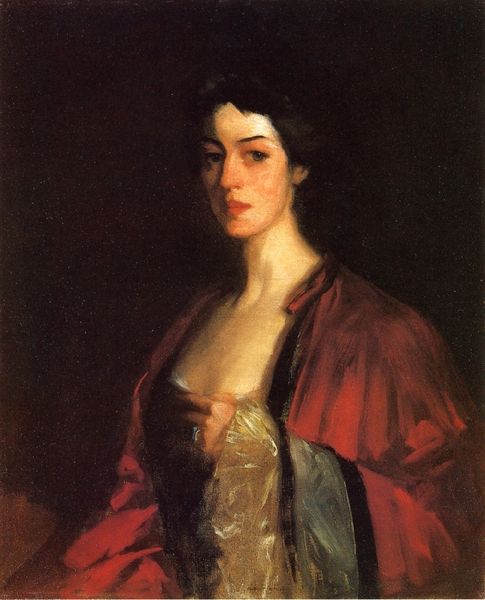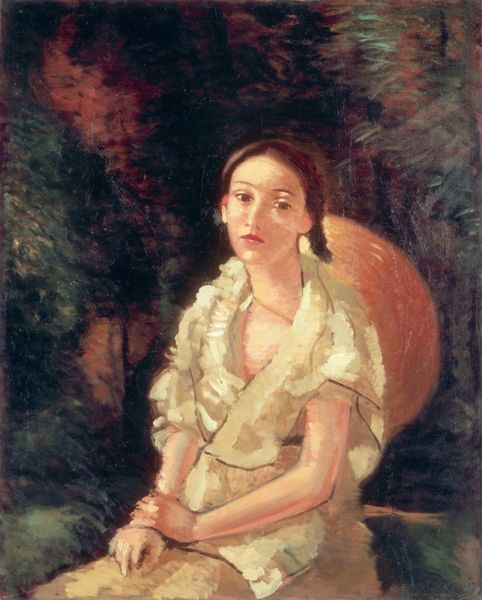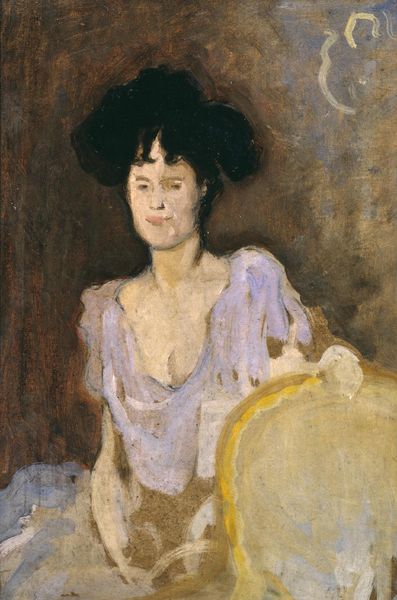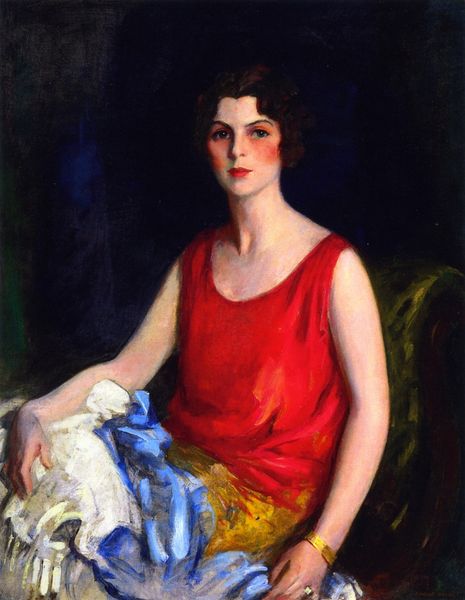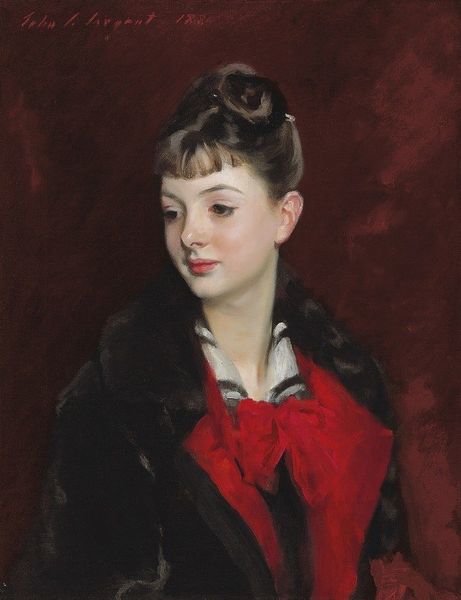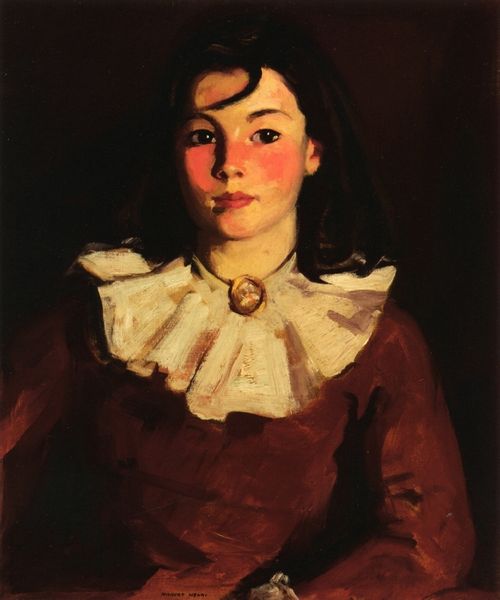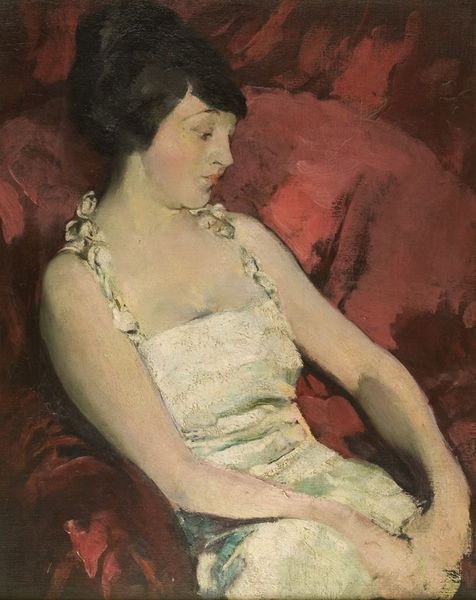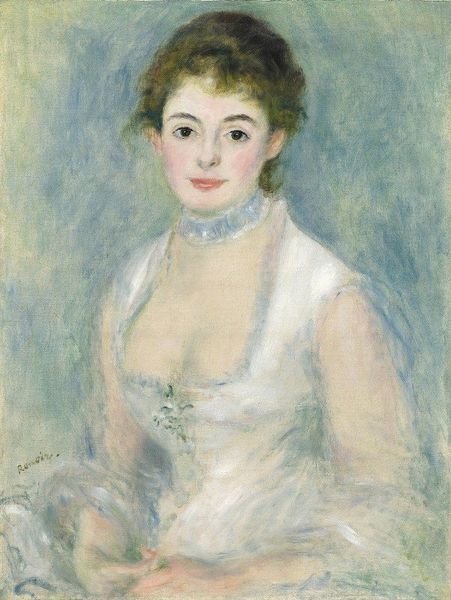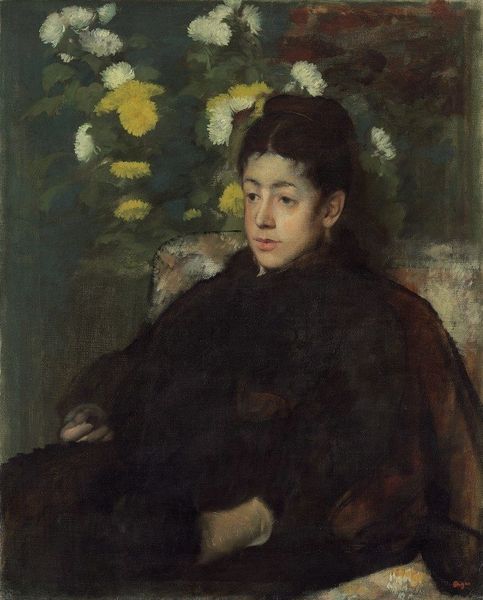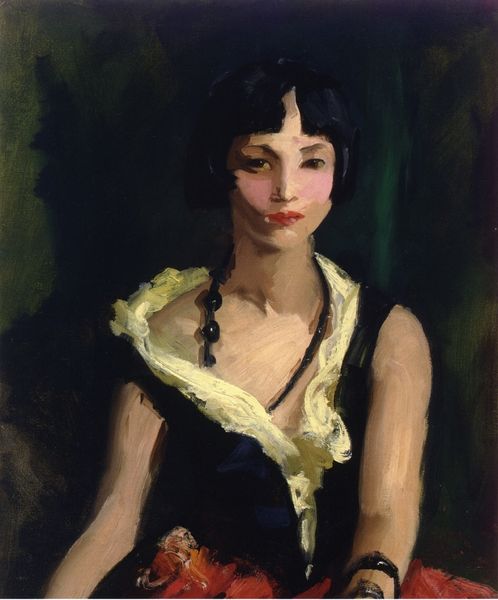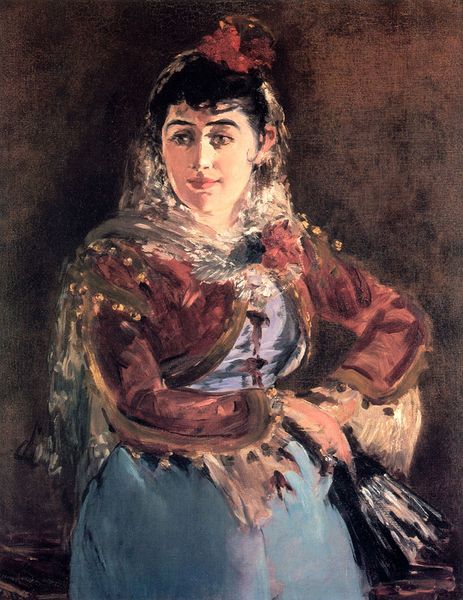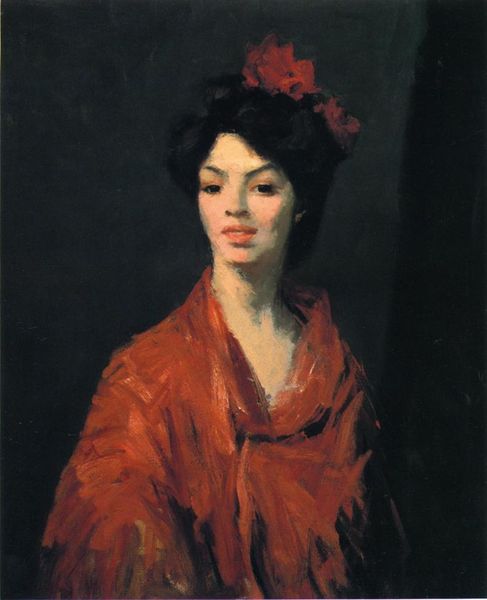
Copyright: Public domain
Editor: This is Robert Henri's "Portrait of Fay Bainter," painted in 1918 using oil on canvas. The first thing that strikes me is the subject’s direct gaze, yet she seems somehow detached. What do you see in this piece? Curator: This painting offers us a window into the complexities of female representation during the early 20th century. Henri, associated with the Ashcan School, often depicted everyday life. Yet, here, he paints a stage actress, Fay Bainter, suggesting a negotiation between realism and idealized femininity. Notice the loose brushwork; how does that impact your sense of the sitter’s presence? Editor: It softens her, making her seem less like a celebrity and more approachable, more human perhaps. Curator: Precisely. Henri seems to be capturing a sense of inner life. It’s important to consider the broader social context. World War I was raging; women were entering the workforce and claiming new social roles. How does Bainter's posture and gaze resonate with those shifting gender dynamics? Is it assertive, passive, or something in between? Editor: It’s interesting… I see both confidence and vulnerability in her expression, like she's poised, but maybe unsure of what’s next. Curator: Exactly. Henri isn't just painting a likeness, he is also painting a psychological portrait that reflects the anxieties and aspirations of women in a rapidly changing world. This work invites us to look at art history through the lens of gender, identity, and social change. What do you think you’ll remember most about it? Editor: I’ll remember to look for those undercurrents, the way artists can hint at societal shifts through a single face. Thank you for pointing that out. Curator: And I'll remember that art offers ways for us to actively rewrite what has been passed down about it.
Comments
No comments
Be the first to comment and join the conversation on the ultimate creative platform.
